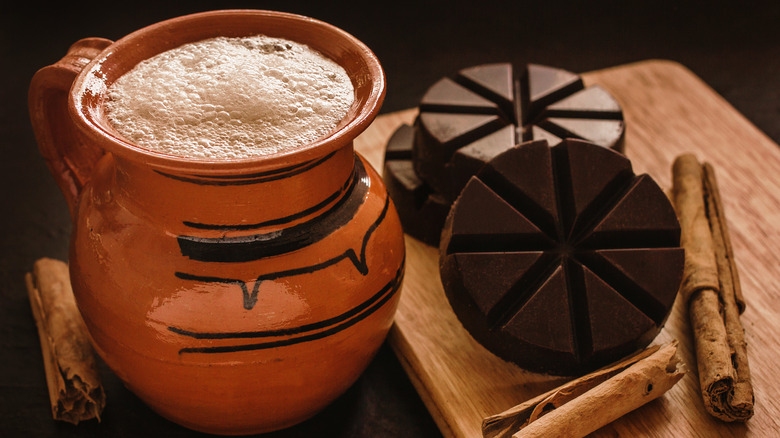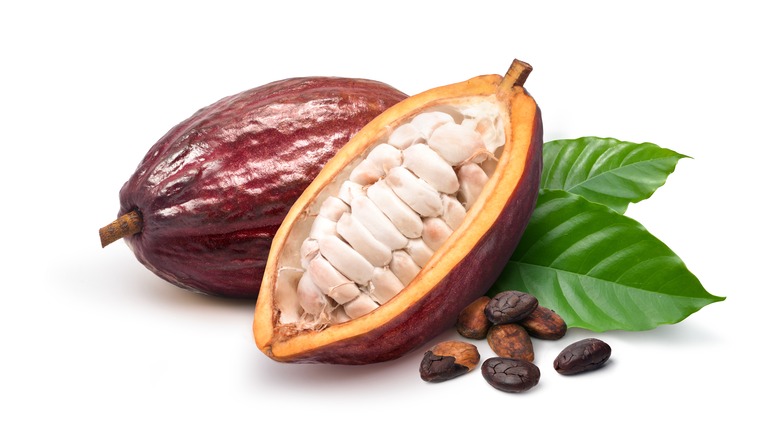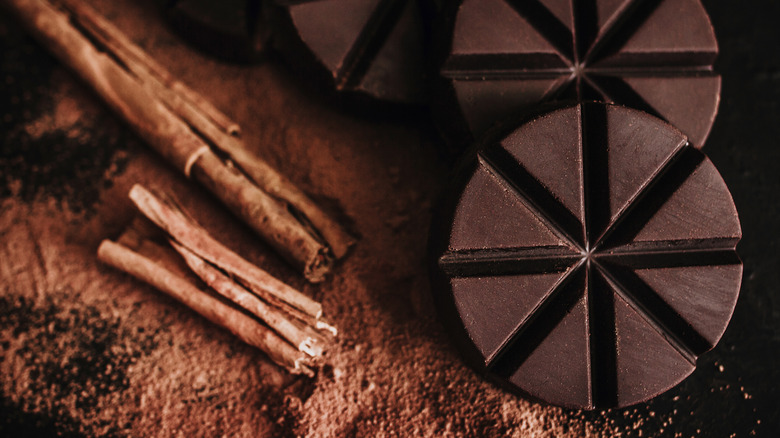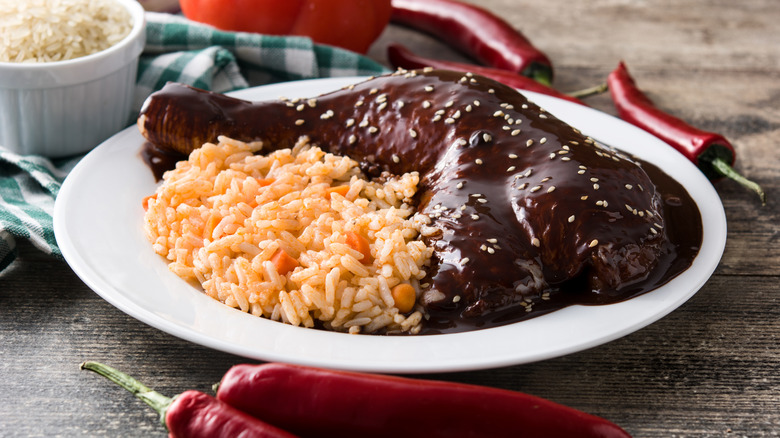Mexican Chocolate Discs Are The Ingredient Your Pantry Is Missing
Pantry staples look different to everyone. Despite the differences, it's worth betting that most American kitchens stock things like pasta, stock or broth, rice, oils, and flour. Basically, the items reached for the most in any given household are what qualify as "staples," or the things you make sure you don't run out of because running to the store in the middle of meal preparation is infuriating. Here and there, you discover ingredients that you never thought you'd use regularly but suddenly find yourself reaching for multiple times per week. Sriracha sauce and everything bagel seasoning come to mind here.
And then, there's chocolate, which is undoubtedly always in most modern pantries at all times for baked goods or midnight snacking. From syrup to chips to whole bars, there is always an occasion to put chocolate into something for a sweet fix. What you may be unfamiliar with, however, is a form of chocolate from Mexico that resembles more of a hockey puck than it does a luscious, creamy bar. On this one, go ahead and let your curiosity get the best of you and give it a try. It is much more versatile than it looks.
What Mexican chocolate discs are
Most often found in round packaging and wrapped up in individual discs, Mexican chocolate has gradually become more prevalent in American markets. Upon unwrapping a disc, one finds a solid piece of what looks like chocolate but is generously studded with sugar crystals and contains shallow indentations all around, which direct consumers on where to cut into the disc.
According to Eater, the process to make this culinary curiosity begins with the cacao fruit. Native to Mexico, a cacao fruit resembles an American football. Harvested by hand, each fruit contains anywhere from 30 to 60 seeds which are coated in a white, pulp-like fruit. The seeds are removed and left to ferment anywhere from two to nine days after which they are sun-dried and finally shipped to chocolate makers and factories.
At this point, the dried beans are shelled to retrieve what is called "cacao nibs," or the element that is ground and made into chocolate. They are completely unsweetened but, when consumed, feature the unmistakable nuances of dark chocolate, per Isabel Eats. The ground nibs are made into a paste and combined with sugar, cinnamon, and often other flavorings, but are not mixed with cocoa butter, which is what makes chocolate creamy. The paste is then cooled and molded into a distinctive disc shape, ready to be enjoyed.
How to use Mexican chocolate discs
It's not unheard of to sneak a few (or a handful) of chocolate chips to munch on while you're baking or to save a square of a baking bar as a reward for the cook, but you might want to abstain from such a practice when it comes to Mexican chocolate. Yes, it is entirely edible but what you'll get is what can be easily described as a mouthful of sand. Mexican chocolate contains a good amount of sugar, in its unadulterated form. The sugar crystals have not been dissolved because there has been no addition of extra fat so the grit factor is high. It works in these discs of chocolate because the intention is to use such discs in foods or, most commonly, beverages.
Mexican natives, all the way back to the ancient Olmec civilization, per Eater, have enjoyed drinking chocolate. Cacao, chiles, water, and honey were combined and frothed into a delicious beverage that the Mayans enjoyed, and the same idea exists today in the form of Mexican chocolate discs. Chunks of the disc are meant to be grated and whisked into warm milk resulting in a sweet and spicy drink that is similar to American hot chocolate. What is less known is that Mexican chocolate can be used in a variety of food dishes, and not just sweet ones.
Chocolate for dinner
Taza Chocolate, which produces several flavors of Mexican chocolate discs, including coffee, salted almond, and guajillo chile, lists many savory recipes like Mexican mole and chili that utilize the ingredient. It is a welcome addition to any recipe where you need to tone down any bitterness without turning your dish into something sweet. Naturally, Mexican chocolate is welcome in desserts and sweets and will give these creations new, exotic twists depending on the brand and flavor you use. Remember, though, it won't melt like baking chocolate, so you'll most likely need to finely grate it into your recipes
Popular brands of Mexican chocolate discs that you're likely to find in your supermarket include Nestle's Abuelita and Ibarra, but there are several more you can find online, and of course, a plethora to choose from on your next trip to Mexico. Just be sure to make some room in your pantry for all of your favorites.



